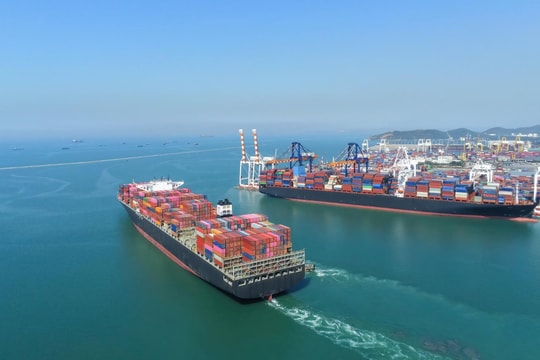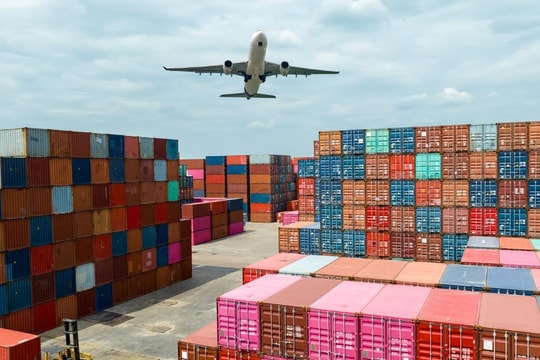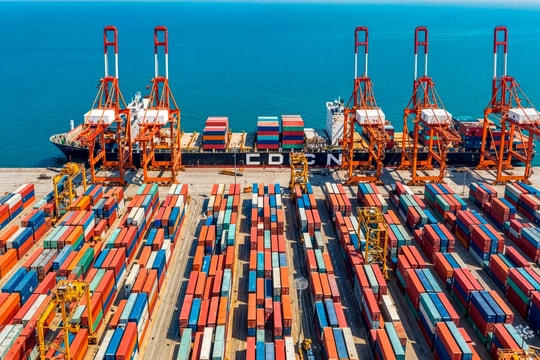To digitalize logistics SMEs simple and common technologies suitable to the current management level and potential of enterprises should be focused. Let’s start with simple steps.

Many SMEs have wondered where to start the digitalization for their enterprises. In fact, they can start it with simple, primitive steps. The goal of digitization in general and logistics enterprises in particular is to create convenience for customers, shorten internal procedures to save time, thereby leading to the ultimate goal of saving costs and improve competition abilities.
The first step that small and medium logistics enterprises can take is to scan internal text documents, processes and distribute those documents via email or distribute, store, and share data on their enterprise websites instead of printing and distributing them in the traditional way. It is possible to set up project-based, thematic, specialized working groups to convey and share documents using social networking applications such as Zalo, Messenger, Wechat... It does not sound very professional with large companies and corporations but it can be suitable to small enterprises thanks to the fact that these applications are free and have more advantages compared to traditional way as making calls or texting because information is topic-focused.
Businesses should organize online meetings through free digital platforms as Zoom, Google Meet, Microsoft Teams... instead of having time- consuming, costly face-to-face meetings. Depending on their own characteristics, enterprises can build or invest in separate software: warehouse management (VMS), transport management (TMS), materials and spare parts management, software customs declaration... instead of having to invest in management technology for the entire supply chain.
For larger companies, it is possible to build work management software to run company operations on the web or app platform. Task management software is generally not too expensive but still meets the digitization needs of enterprises. SMEs can also choose separate management modules: office, human resources, finance ... to digitalize their business depending on the financial and human resources of the unit. As the company grows, they will move towards enterprise management with the total business management program ERP or other advanced technologies.
Factors determining digital success
For SMEs, the head of them is completely independent decision-maker, so he will play a very important role in the process of business digitization. Usually, the leaders of SMEs are less interested in the issue of business digitization because they think that small-scale enterprises can be managed manually in traditional methods. So digitalization is not necessary. On the other hand, some SMEs’ leaders think that digitization is so huge and costly that only large enterprises can do it, so they ignore.

Therefore, to digitalize successfully a logistics enterprise, the leaders must have a certainunderstanding of digitalization, have determination to digitalize his business for the highest purpose of satisfying customer needs, saving time. time and cost, improving competition abilities of enterprises. In the process of doing so, the problem of replacing old-style management thinking with the new one, in the direction of data digitalization is the most important and difficult issue in every enterprise.
In addition, the consensus of middle leaders and employees is needed in the process of business digitalization. Normally, employees at SMEs have been familiar with working in traditional way as paper documents and oral reports, when they have to work with digitalization contents, there will be negative reactions, especially with direct, unskilled workers who lack technical knowledge and skills- they are objects that need to the most attention in the enterprise. Being consensus, regular maintaining and controlling the digitalization progress will bring success to business who is in the process of digitalization.
When mentioning the digitalization, we should not forget the matter of training. Although the technology content used for small and medium logistics enterprises is not complicated, enterprises also need to develop training programs on information technology knowledge and skills for employees, especially direct workers as drivers, warehousekeepers, freight forwarders, customs officers... so that they can master the software and technology applications being used at their enterprises.
Choosing technology for digitalization is also one of the factors that help businesses succeed. Choosing the wrong technology, not matching the financial potential and responsive abilities of human resources, will lead to failure. Therefore, enterprise leaders need to carefully study the current situation of their enterprises before deciding what technology application to be applied.
Enterprises need to build a digitalization roadmap from low to high corresponding to their development strategy. The more the business grows, the higher the digital content in the enterprise must be and finally when the conditions are perfect, digital transformation will be carried out for all business activities.









.png)





.png)

